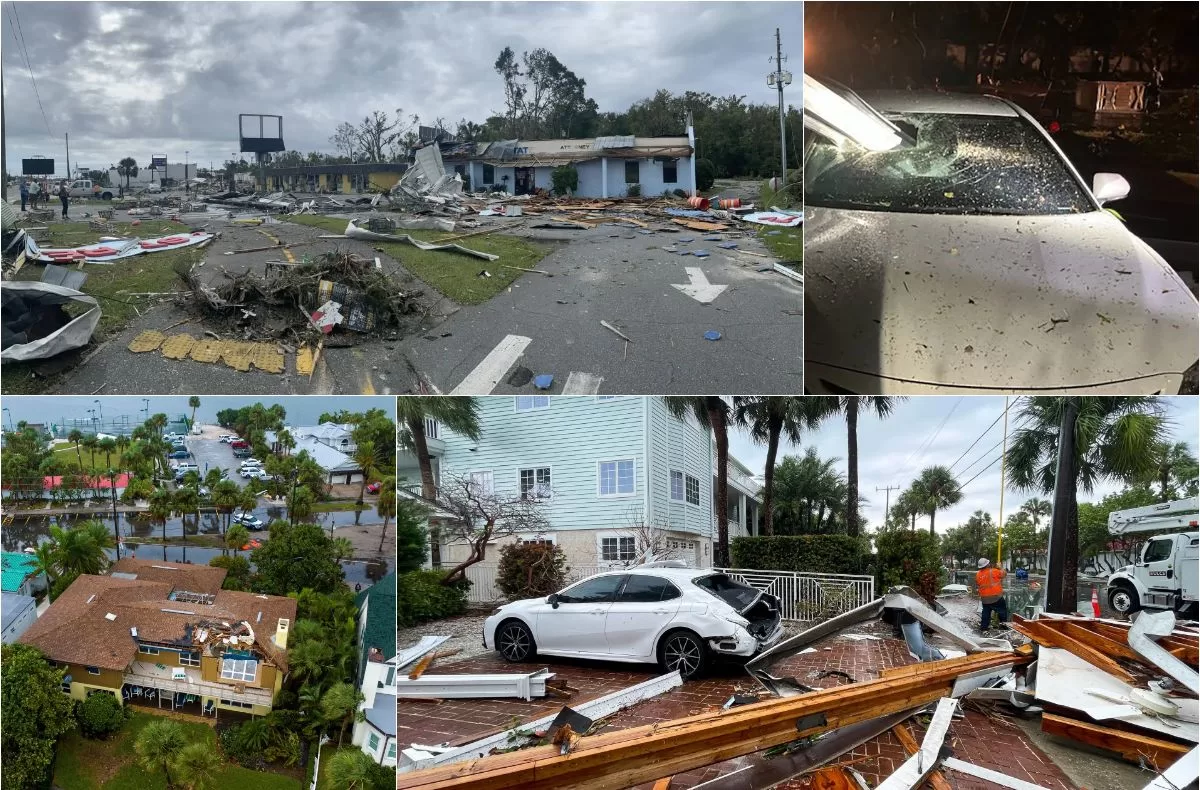MIAMI – The Florida Department of Health (FDOH) issued a mosquito-borne disease advisory after four local cases of malaria were confirmed in Sarasota County, the first time there has been a local contagion in 20 years.
The US Centers for Disease Control and Prevention (CDC) also confirmed a case in Texas, in Cameron County. There is no evidence to suggest that the cases in Florida and Texas are linked, but they are the first cases of local transmission in the United States since 2003, they confirmed and sent a health alert to monitor the disease.
In Florida, all of the individuals have been treated and are recovering, according to the FDOH.
Since 1992, there have been 11 mosquito-borne malaria outbreaks in the US; the last occurred in 2003 in Palm Beach County, Florida, where eight cases were reported.
HOW IS MALARIA TRANSMITTED AND HOW IS IT TREATED?
In the case of Florida, malaria, or paludism as it is also known, is transmitted through infected Anopheles mosquitoes, explains FDOH.
Malaria is caused by a parasite that is spread through mosquito bites.
The malaria-causing parasite in these Florida cases has been identified as the species Plasmodium vivax and according to the FDOH, effective treatment is readily available through hospitals and other health care providers.
The most frequent symptoms are fever, chills, sweating, nausea/vomiting, and headache, therefore, if you present these types of symptoms, you should seek immediate medical attention.
“The type of malaria we’re seeing here in Florida right now is (plasmodium) vivax malaria,” explained Dr. Aileen Marty, an epidemiology physician. “And that’s the same type of malaria that was recently transmitted in Texas as well.”
According to the doctor the Plasmodium vivax It’s not considered as “serious” as Plasmodium falciparum, a similar type of parasite that causes malaria, but for people with other health risks, it can be.
“Vivax is not considered as serious as (other strains of malaria) but it can be (…) in young children, pregnant women, people with underlying diseases, those people are at increased risk of serious illness from vivax malaria.”
To detect malaria, a blood test should be done, surely after reviewing the symptoms and the patient’s medical history. The CDC recommends a microscopic examination of blood and a rapid diagnostic test (RDT).
World Health Organization explains that there are five species of parasites of the genus Plasmodium that cause malaria in humans. Of these, the most dangerous are two: P. falciparum and P. vivax. However, as Dr. Marty explained, P. falciparum is the deadliest of the malarial parasites and also the most prevalent on the African continent. In most countries outside of sub-Saharan Africa the predominant parasite is P. vivax, which was found in the Florida cases. The other species that can infect humans are P. malariae, P. ovale, and P. knowlesi.
The CDC says malaria is one of the world’s most serious public health problems. Here’s what you need to know about the dangerous disease.
PREVENTIVE MEASURES
Residents across the state should take precautions by applying insect repellent, avoiding areas with large mosquito populations and wearing long pants and shirts when possible, especially during sunrise and sunset when mosquitoes are most active, state experts say. FDOH.
The Florida Department of Health works collaboratively with local partners and Sarasota County Mosquito Control and reported that aerial and ground spraying of mosquitoes continues to take place in these areas to mitigate the risk of further transmission.
The Department advises the public to remain diligent in their personal mosquito protection efforts by remembering the state and local “Drain and Cover” campaign.
VACCINE AGAINST MALARIA
Since October 2021, the WHO recommends the use of the RTS,S/AS01 malaria vaccine in children living in regions with moderate to high transmission of P. falciparum malaria, which is not the case in the USA. The vaccine has been shown to significantly reduce the incidence of malaria and the severe and fatal form of the disease in children, the WHO says.
FOLLOW THESE TIPS TO AVOID THE SPREAD OF MOSQUITOES
-Drain stagnant water to prevent mosquitoes from multiplying.
-Drain water from trash cans, house gutters, buckets, pool covers, refrigerators, toys, flower pots, or any other container where rain or sprinkler water has collected.
-Discard old tires, drums, bottles, cans, pots and pans, broken appliances, and other items not in use.
-Empty and clean birdbaths and pet water bowls at least once or twice a week.
-Protect boats and vehicles from the rain with tarpaulins that do not accumulate water.
-Keep pools properly chlorinated and treated. Empty plastic pools when not in use.
-Cover doors and windows with screens to keep mosquitoes out of your home. Repair broken screens on windows, doors, porches, and patios.
-Cover your skin with clothing or appropriate repellent if you are going to do outdoor activities in areas with many mosquitoes.
-Wear shoes, socks and long pants and long sleeves. This type of protection may be necessary for people who must work in areas where mosquitoes are present.
TIPS ON THE USE OF REPELLENTS
-The FDOH recommends that you carefully read the label directions for approved use before applying a repellent.
-Apply insect repellent to exposed skin or clothing, but not under clothing.
-Treat clothing and equipment with products containing 0.5% permethrin. Do not apply permethrin directly to the skin.
-Some repellents are not suitable for children. Make sure the repellent is child-safe and age-appropriate: Mosquito repellents containing lemon eucalyptus oil or para-menthane-diol should not be used on children under the age of three.
-DEET is not recommended for children under two months of age. DEET (N,N-diethyl-meta-toluamide). as the CDC explains, it is a chemical substance made by humans. In its pure form, it is a nearly colorless to amber liquid with a slight aromatic odor. DEET is the active ingredient in some common repellents that are widely used to repel biting insects (such as mosquitoes and bed bugs) and mites (such as ticks and mites).
-Avoid applying repellents on children’s hands.
-Parents should first apply the repellent to their hands and then transfer it to the child’s skin and clothing.
BACKGROUND
Before the COVID-19 pandemic, approximately 2,000 cases of primarily travel-related malaria were diagnosed in the United States each year, according to the CDC.
Approximately 300 people experienced severe illness (mostly from P. falciparum), and 5 to 10 people with malaria died each year, according to data released by the CDC. Most imported malaria cases in the United States are diagnosed during the summer and early fall.
According to the WHO, Africa accounts for a disproportionately high fraction of the global burden of disease. In 2021, the region concentrated 95% of malaria cases and 96% of deaths from this disease. In that year there were 247 million cases of malaria.






